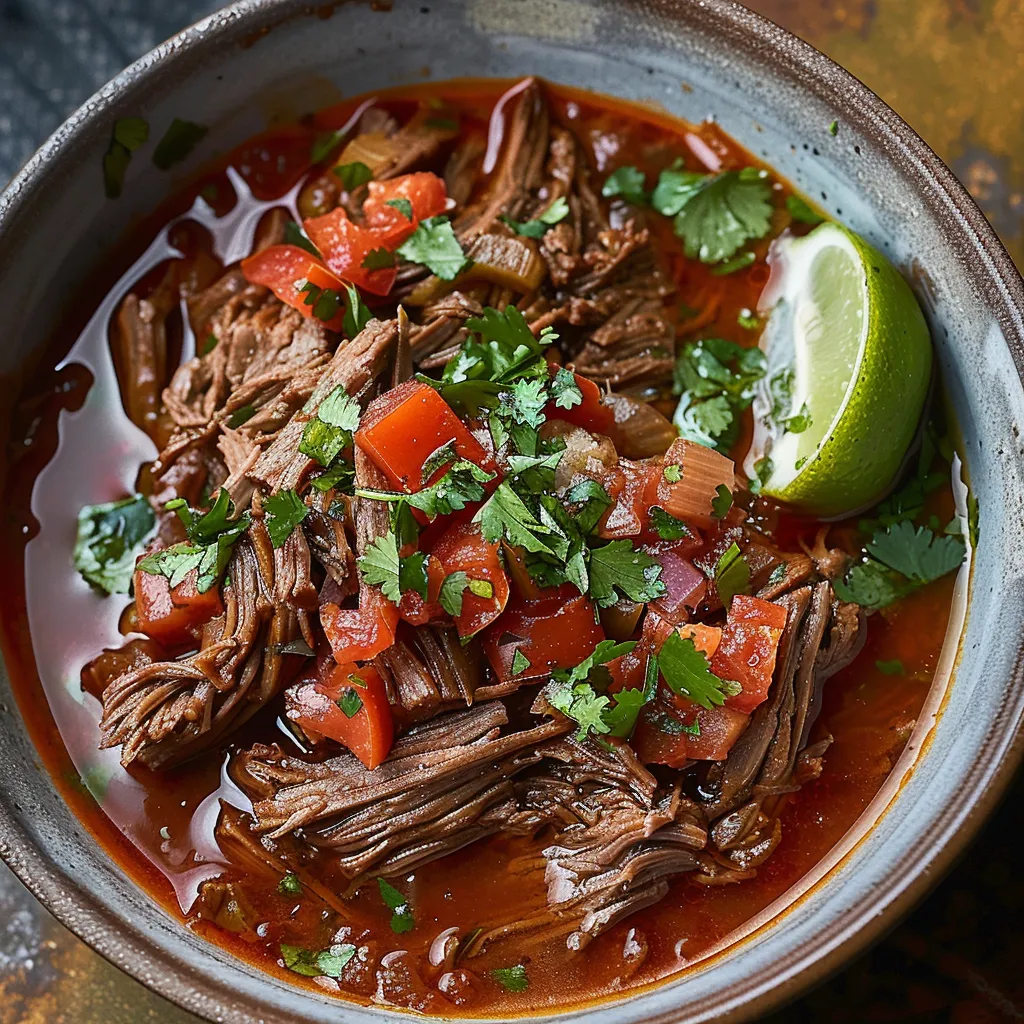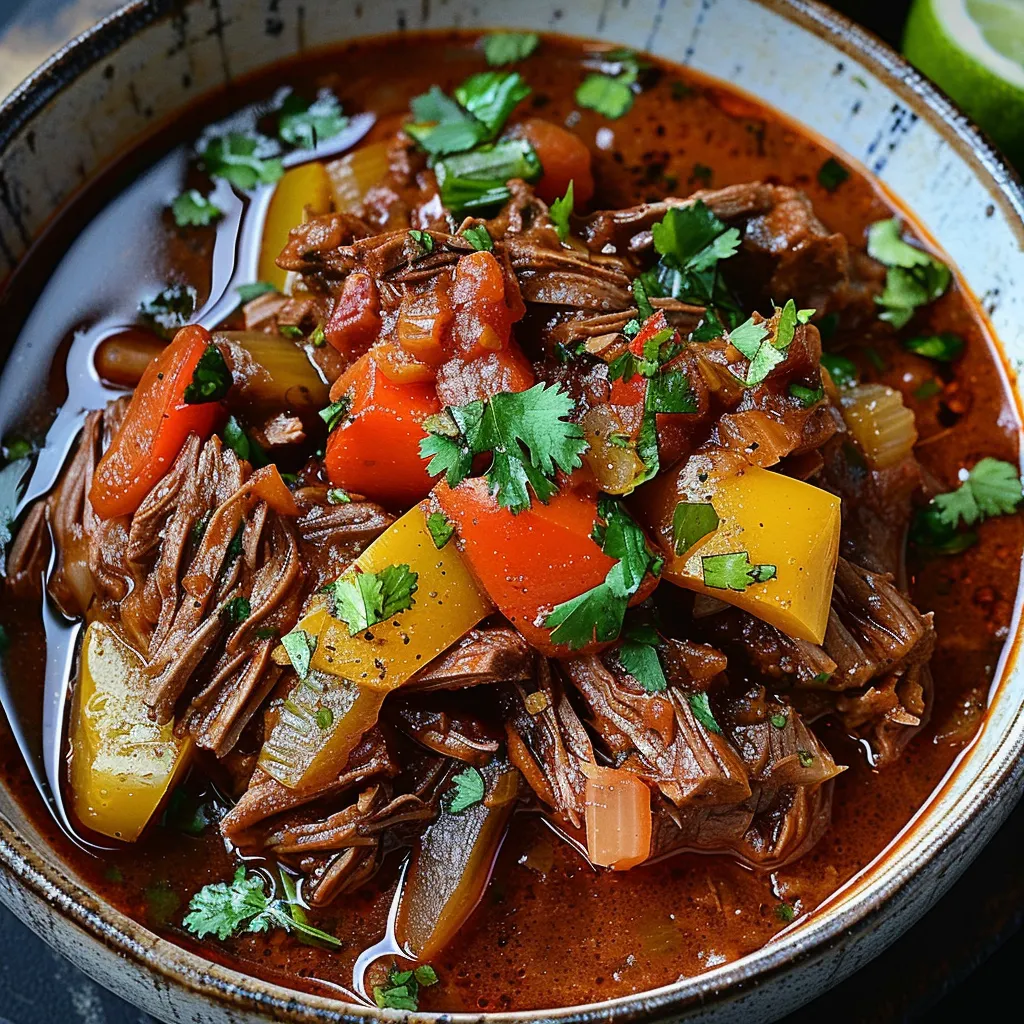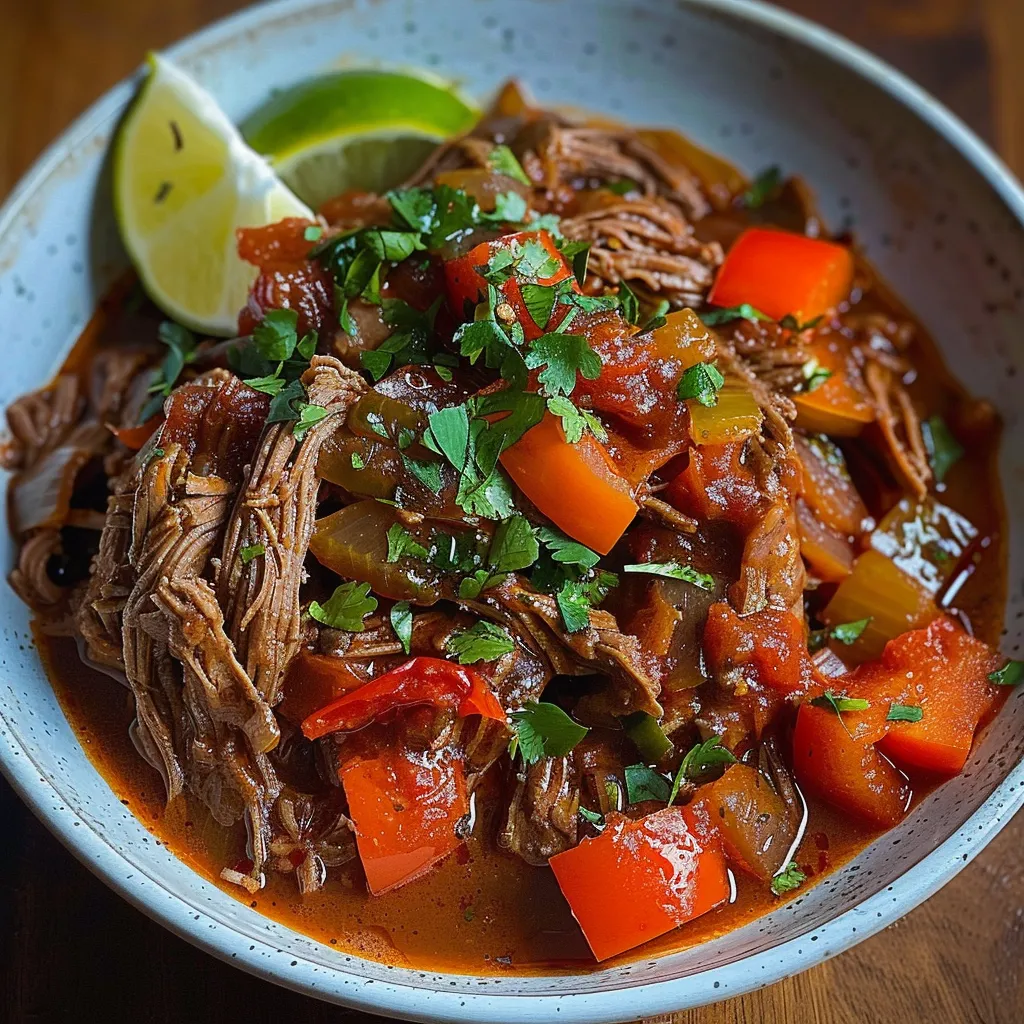 Pin it
Pin it
The first spoonful of real Cuban Ropa Vieja whisks you away to bustling Havana streets—those soft, pulled beef strands soaked in a deep, flavorful sauce loaded with sweet peppers, strong garlic, and nutty cumin. This isn't your average beef meal; it's a taste festival, a nod to history, and proof that good things come to those who wait. In our home, what started as a weekend cooking project has grown into a family custom that gets everyone rushing to grab a seat at dinner time.
The first time I cooked this was for my homesick Cuban neighbor. She took one bite and started tearing up, saying it tasted exactly like what her grandma used to make. What's the trick? Taking your time to brown the meat properly before slow cooking, and never rushing—just letting all those amazing flavors blend together for hours.
Key Ingredients and Shopping Advice
- Flank Steak: Go for pieces with nice fat running through them and bright red coloring.
- Bell Peppers: Mix red and green ones for the right taste and pretty color contrast.
- Tomato Sauce and Paste: Pick versions without extra sugar or too much salt.
- Cumin: Buy whole seeds and gently toast them before grinding for much better smell and taste.
 Pin it
Pin it
Step-by-Step Cooking Guide
- Step 1:
- Dry your flank steak with paper towels, add salt and pepper, then let it sit at room temp.
- Step 2:
- Get your pan super hot and brown the steak on both sides.
- Step 3:
- Cut up your onions and bell peppers, chop the garlic, and get everything else ready.
- Step 4:
- Put your steak in the slow cooker and pour beef broth around the sides.
- Step 5:
- Stir together tomato sauce with paste and pour it over your meat.
- Step 6:
- Throw in the peppers, onions, garlic, cumin, and fresh cilantro.
- Step 7:
- Cook it low and slow for 8-10 hours or on high for 4 hours.
- Step 8:
- Pull the meat apart using two forks and mix it with all that sauce.
- Step 9:
- Let everything hang out for 15-20 minutes before you serve it.
My grandma always told me you can tell good Ropa Vieja by how well the meat drinks up the sauce. Whenever I cook this now, I'm right back in her kitchen, where this dish would bubble away all day, filling every corner with amazing smells before the whole family came over on Sundays.
Tasty Balancing Tricks
The natural sweetness from peppers and onions needs to play nice with the meaty beef and tomatoes, while vinegar adds brightness to everything. Toss in some capers or green olives during the last cooking hour for a salty kick that really pulls it all together.
Ways to Serve It Up
Put it on white rice with black beans for the traditional way. It's also fantastic stuffed in tacos, piled on tostones, or tucked inside empanadas.
Ropa Vieja goes beyond just filling hungry stomachs; it feeds your spirit with flavors that tell stories about cultural strength and kitchen creativity. Whether you're connecting with your family roots or trying something totally new, this dish opens a door to Cuba's amazing food traditions and speaks that universal language we all understand—comfort food.
 Pin it
Pin it
Frequently Asked Questions
- → What’s the meaning behind 'Ropa Vieja'?
- Ropa Vieja means 'old clothes' in Spanish. It’s named for its shredded look, which resembles colorful worn-out fabric. According to lore, a man cooked his clothes during tough times, and this comforting dish was the outcome.
- → Can I use another beef cut instead of flank steak?
- Sure! While flank steak’s most common, chuck roast, skirt steak, or brisket work just as well. Any cut that breaks apart after hours of cooking will be perfect.
- → What pairs nicely with Ropa Vieja?
- Go traditional with white rice, black beans, fried plantains, or an avocado salad. Cubans also enjoy it with Cuban bread or corn tortillas to mop up the sauce.
- → Could I make Ropa Vieja in a pressure cooker?
- Absolutely. Use the sauté setting to brown the meat, then pressure cook everything for 40–45 minutes. Let the pressure release naturally for 15 minutes, shred the meat, and simmer until the sauce is just right.
- → How should I store any leftovers?
- Pop leftovers into a sealed container, and they’ll last up to 4 days in the fridge. You can freeze them for up to 3 months, too. It’s often even tastier the next day as the flavors settle.
